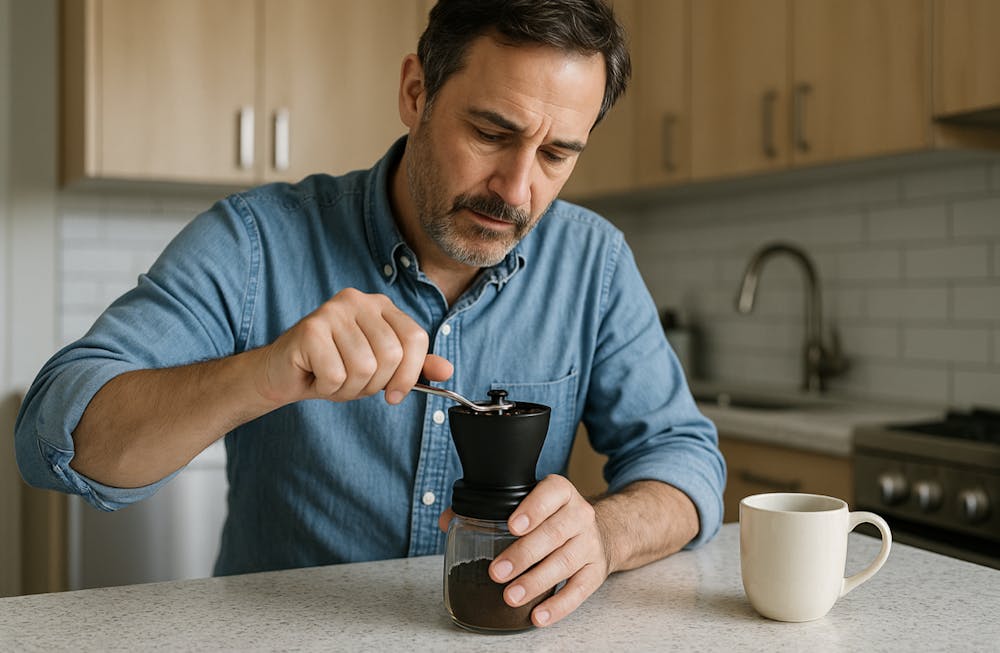Your grinder could be the actual offender if your morning coffee seems flat or bitter. Until they are ground, coffee beans retain their strongest tastes inside. Things get difficult, however, once that occurs. Always remember that your coffee tastes change significantly depending on how you use your grinder. In this article, you will learn the six tips that will teach you how to get the most flavor out of every cup.
1. Choose the Right Type of Grinder
Coffee grinders often cut beans unevenly, blade grinders produce coarse particles and fine dust in the same batch, hence interfering with extraction and taste. Conversely, burr grinders crush beans uniformly. This lets you more control over your brew. Every time, choose a burr grinder if taste is your goal. Since coffee grinders can be more expensive up front, your taste buds will appreciate it.
2. Match the Grind Size to the Brew Method
Grinding too fine or too coarse is one of the simplest ways to spoil a nice batch of beans. Every brewing technique requires a particular grind size. In addition to that, you should go coarse if your French press is in use. Drip coffee calls for a medium grind. Espresso begs for something more delicate. The water draws out just the correct tastes when your grind size fits your brew technique, not too much, not too little.
3. Grind Just Before Brewing
Remember that the minute coffee is ground, air begins to ruin its oils and aromas. That is why, ideally, grind right before brewing. If you grind a whole week’s worth at once, you’re missing out on the good benefits. Every morning, a quick grind helps to seal in those strong notes and rich aroma, hence supporting this. Every coffee you sip makes it worth it even if it may take a little longer.
4. Use the Right Amount of Coffee
Using your grinder is about the quantity as well as the grind itself. Putting too little coffee may make your brew weak and unpleasant, while excessive amounts of coffee may make it strong and unpleasant. For every six ounces of water, a decent rule of thumb is to use one to two tablespoons of coffee. That is the reason why using a kitchen scale to weigh your beans allows you to remain consistent.
5. Keep Your Grinder Clean
Old coffee grounds don't just sit quietly; they become stale, greasy, and change the flavor of fresh pots. Having a filthy grinder will cause that stale taste to accumulate. Every week or so, spend a few minutes cleaning around the burrs or blades with a little brush or dry cloth. Others pass uncooked grains or dry bread through the grinder to remove debris. This way, a clean grinder produces a fresher cup.
6. Adjust Settings and Experiment
Take note that it is a good idea to change things now and then even if your grind seems correct. From one batch to the next, coffee beans vary, so your preferences could change with time. Don't be scared to change the grind size a little and see the outcomes. A finer grind will help your coffee to taste less sour, and go coarser if it's too bitter. These little tweaks help highlight the richness and balance you want.
Great Coffee Starts With the Right Habits!
Making your coffee will tell the narrative after your grinder is set and your procedure is rigorous. That’s why a better grind results in higher extraction, which guarantees a superior brew each time. You just need the correct habits and a little consistency; you don't have to be a barista to pull it off. Next time you grab that bag of beans, pay your grinder the attention it merits to have a fantastic morning coffee cup.
This post is provided by a third party who may receive compensation from the products or services they mention.


